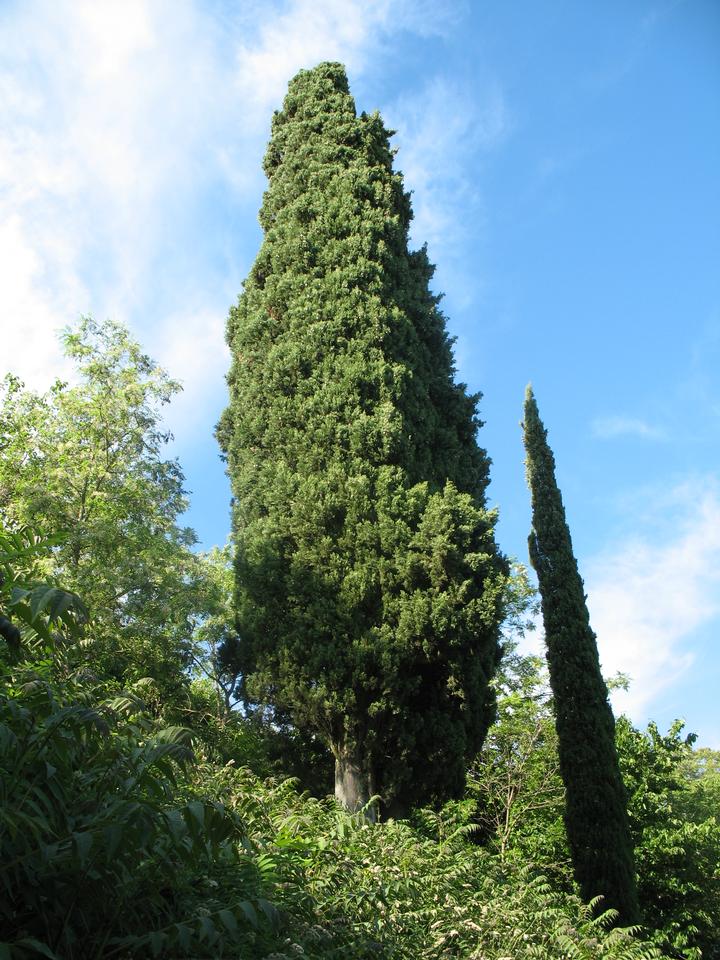Cypress, Italian
Cupressus sempervirens
Cupressaceae - Cypress
Description
Leaves: Scale-like or awl shaped on juvenile or fast-growing twigs; overlap in four rows to cover twig similar to junipers; evergreen; green to dark-green.
Twigs/buds: Twigs covered by foliage so not noticed. Buds small; inconspicuous.
Flowers/fruit: Monoecious. Pollen cones small, yellow, releasing pollen in spring; female cones nearly round, maturing in two growing seasons into a round, woody cone; 1" diameter; brown; with 6 to 8 shield-shaped scales, somewhat similar to baldcypress.
Bark: Scaly; red-brown.
Wood: Unimportant.
General: Native to southern Europe and western Asia. Naturally found in warm, fairly dry areas. Many of the native trees have the narrow, columnar canopy commonly found in all of the cultivars. Shade intolerant.
Landscape Use: Generally only for use in warm, dry climates - not very cold-hardy. I had only seen it in Utah in the St. George area, though more recently I have seen several good-sized trees growing around a motel parking lot in Moab. Very formal appearance. Zones 7-9.
Cultivars: 'Glauca', 'Roylei', 'Stricta', 'Swane's Golden' or 'Swain's Gold'.
Characteristics
General
| Family | Cupressaceae - Cypress |
|---|---|
| Cultivar Availability | Yes |
| Hardiness Zone | 7-9 |
| Type | Conifer |
| Utah Native | No |
Growth
| Growth Rate | Medium |
|---|---|
| Mature Height | High |
| Longevity | High |
| Is Good Under Power Lines | No |
| Crown Shapes | Pyramidal |
Ornamental
| Bark | Yes |
|---|---|
| Fall Color | No |
| Flowers | No |
| Foliage | Yes |
| Fruit | Yes |
Tolerance
| Shade | Low |
|---|---|
| Salt | Medium |
| Drought | High |
| Poor Drainage | Low |
| Alkalinity | High |
| Transplanting | Medium |







